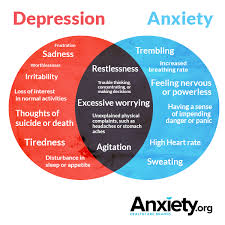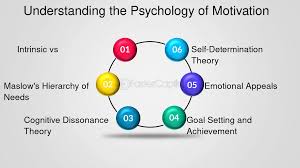In the dynamic and competitive world of business, marketing is no longer just an optional function — it is a fundamental pillar of business success and growth. Whether a company is a small startup or a large multinational corporation, the way it communicates, connects, and creates value for customers through marketing often determines its trajectory. In this article, Study Rhino explores the vital role marketing plays in business growth, breaking it down into understandable sections for students, entrepreneurs, and future marketers.
What Is Marketing?
At its core, marketing is the process of promoting and selling products or services, including market research and advertising. However, modern marketing goes much deeper. It involves identifying customer needs, developing solutions, communicating value, and building strong customer relationships.
The American Marketing Association defines marketing as:
“The activity, set of institutions, and processes for creating, communicating, delivering, and exchanging offerings that have value for customers, clients, partners, and society at large.”
Simply put, marketing is the bridge between a business and its customers.
How Marketing Drives Business Growth
1. Creating Brand Awareness
A business cannot grow if people don’t know it exists. Marketing activities — such as advertising campaigns, social media promotions, public relations, and content marketing — ensure that a company’s name, products, and values reach potential customers.
Effective brand awareness campaigns make a company top-of-mind for consumers when they need a product or service. For example, think about brands like Coca-Cola or Apple. Their massive growth is deeply tied to how effectively they have marketed themselves globally.
Key takeaway: Without brand awareness, even the best products can go unnoticed.
2. Building Customer Loyalty
Marketing isn’t just about getting new customers; it’s also about keeping them. Loyal customers are more likely to repurchase, recommend the brand to others, and even forgive occasional mistakes.
Strategies like email marketing, loyalty programs, personalized offers, and regular engagement on social media help businesses maintain a strong connection with their audience. Research shows that retaining a customer is five times cheaper than acquiring a new one, making loyalty-focused marketing highly cost-effective.
Key takeaway: Loyal customers are the foundation of sustainable business growth.
3. Understanding Customer Needs
Modern marketing heavily relies on data-driven insights. Businesses invest in market research, customer surveys, feedback forms, and behavior analytics to understand what their customers truly want.
By analyzing customer preferences, pain points, and buying habits, businesses can fine-tune their products and services. This customer-centric approach leads to higher satisfaction rates and better market fit, both of which fuel growth.
Key takeaway: Growth happens when businesses meet real customer needs.
4. Driving Sales and Revenue
Sales and marketing go hand in hand. While sales teams close deals, marketing creates demand and generates leads. Techniques like content marketing, SEO (Search Engine Optimization), influencer collaborations, and digital ads attract potential customers and drive them towards making a purchase.
Effective marketing strategies create sales funnels that guide consumers from awareness to interest, then desire, and finally, action. Every step of the funnel is optimized to maximize conversions and revenue.
Key takeaway: Good marketing directly translates into increased sales and profits.
5. Gaining Competitive Advantage
In crowded marketplaces, businesses that market themselves effectively stand out. Whether through a unique brand voice, superior customer service, innovative product positioning, or creative advertising, marketing can give companies an edge over their competitors.
Apple, for example, didn’t just sell phones — it sold a lifestyle and identity. By differentiating itself through marketing, it captured a loyal customer base willing to pay premium prices.
Key takeaway: Strong marketing helps businesses dominate their niches.
6. Supporting Innovation and Expansion
Marketing insights often drive innovation. When companies listen to customer feedback and track market trends, they can spot opportunities for new products, services, or features.
Moreover, when businesses expand into new markets — such as launching in a new country or introducing a new product line — marketing lays the groundwork. Through campaigns tailored to the new audience, companies can minimize risks and maximize acceptance.
Key takeaway: Growth through innovation and expansion depends on smart marketing strategies.
Key Functions of Marketing in Business Growth
To understand marketing’s role even better, it helps to break down its major functions:
| Function | How It Supports Growth |
|---|---|
| Market Research | Identifies opportunities, customer needs, and competitor weaknesses. |
| Product Development | Shapes products that satisfy market demand. |
| Pricing Strategy | Ensures products are attractively priced for maximum profitability. |
| Promotion | Spreads awareness and persuades potential buyers. |
| Distribution | Ensures products are available where customers want them. |
| Customer Service | Enhances satisfaction and encourages repeat business. |
The Evolution of Marketing: From Traditional to Digital
Marketing has evolved dramatically over the years. Traditionally, businesses relied on newspapers, radio, television, and billboards to reach audiences. While these channels are still important, digital marketing has revolutionized the field.
Today, businesses can leverage:
Social Media Marketing (Facebook, Instagram, LinkedIn)
Content Marketing (blogs, videos, podcasts)
Email Marketing (newsletters, promotions)
Search Engine Optimization (improving website ranking on Google)
Pay-Per-Click Advertising (Google Ads, Facebook Ads)
Influencer Marketing (partnering with popular online personalities)
Digital platforms allow businesses to target specific audiences, measure results instantly, and adapt strategies in real-time, making marketing more efficient and impactful than ever before.
Fun Fact: As of 2025, global digital advertising spend is projected to surpass $680 billion!
Real-World Examples of Marketing-Driven Growth
1. Nike
Nike’s slogan “Just Do It” became more than a tagline; it became a movement. Through powerful storytelling, celebrity endorsements, and emotional advertising, Nike grew into one of the world’s most recognized and profitable brands.
2. Netflix
Netflix transformed from a DVD rental service to a global streaming giant, largely thanks to brilliant marketing. Their use of data analytics to suggest content, viral marketing campaigns, and international adaptations helped them dominate the entertainment industry.
3. Tesla
Tesla, led by Elon Musk, uses minimal traditional advertising but generates massive media buzz through social media engagement, events, and word-of-mouth marketing. Tesla’s brand power significantly contributes to its valuation and sales.
Challenges in Marketing for Business Growth
While marketing is powerful, it also faces challenges:
Market Saturation: Standing out is harder than ever.
Changing Customer Behavior: Trends shift rapidly.
Economic Downturns: Budgets tighten, reducing spending.
Privacy Concerns: Data protection regulations like GDPR limit targeting capabilities.
High Competition: Competitors can quickly copy successful strategies.
Overcoming these challenges requires continuous learning, adaptability, and creativity from marketing teams.
Conclusion: Why Marketing Is Essential for Growth
Marketing is the engine that drives visibility, customer acquisition, loyalty, and revenue. It not only sells products but also tells stories, builds communities, and shapes brand identities. No matter how good a product or service is, without effective marketing, it is unlikely to reach its full potential.
For businesses aiming for long-term success, investing in marketing is not optional — it is critical. As the business landscape continues to evolve with technology and globalization, those who master the art and science of marketing will lead the next wave of growth.
At Study Rhino, we encourage students, entrepreneurs, and future leaders to see marketing not just as a business tool, but as a powerful force that can change the destiny of companies — and even industries.
Suggested Next Reads on Study Rhino:
“Top 10 Digital Marketing Trends for 2025”
“How to Build a Winning Brand Strategy”
“Understanding Consumer Psychology in Business”




